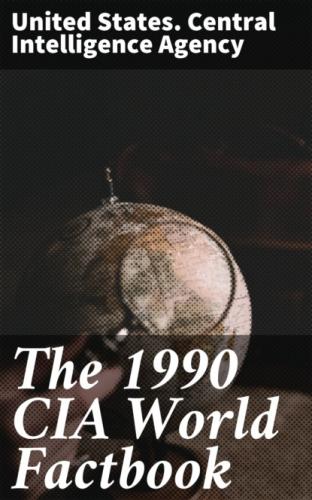1991);
results—CVP 19.2%, PS 15.7%, SP 14.7%, PVV 11.3%, PRL 9.3%,
VU 8.1%, PSC 7.8%, ECOLO-AGALEV 7.7%, VB 2.0%, VDF 1.3%,
other 1.96%;
seats—(106 total) CVP 22, PS 20, SP 17, PRL 12, PVV 11, PSC 9, VU 8,
ECOLO-AGALEV 5, VB 1, FDF 1;
Chamber of Representatives—last held 13 December 1987 (next to be held December 1991); results—CVP 19.45%, PS 15.66%, SP 14.88%, PVV 11.55%, PRL 9.41%, PSC 8.01%, VU 8.05%, ECOLO-AGALEV 7.05%, VB 1.90%, FDF 1.16%, other 2.88%; seats—(212 total) CVP 43, PS 40, SP 32, PVV 25, PRL 23, PSC 19, VU 16, ECOLO-AGALEV 9, FDF 3, VB 2
Communists: under 5,000 members (December 1985 est.)
Other political or pressure groups: Christian and Socialist Trade Unions; Federation of Belgian Industries; numerous other associations representing bankers, manufacturers, middle-class artisans, and the legal and medical professions; various organizations represent the cultural interests of Flanders and Wallonia; various peace groups such as the Flemish Action Committee Against Nuclear Weapons and Pax Christi
Member of: ADB, Benelux, BLEU, CCC, Council of Europe, DAC, EC, ECE,
ECOSOC, EIB, EMS, ESA, GATT, IAEA, IBRD, ICAC, ICAO, ICES, ICO, IDA,
IDB—Inter-American Development Bank, IEA, IFAD, IFC, ILO, ILZSG, IMF, IMO,
INTELSAT, INTERPOL, IOOC, IPU, ITC, ITU, NATO, OAS (observer), OECD, UN, UNESCO,
UPU, WEU, WHO, WIPO, WMO, WSG
Diplomatic representation: Ambassador Herman DEHENNIN; Chancery at 3330 Garfield Street NW, Washington DC 20008; telephone (202) 333–6900; there are Belgian Consulates General in Atlanta, Chicago, Houston, Los Angeles, and New York; US—Ambassador Maynard W. GLITMAN; Embassy at 27 Boulevard du Regent, B-1000 Brussels (mailing address is APO New York 09667); telephone p32o (2) 513–3830; there is a US Consulate General in Antwerp
Flag: three equal vertical bands of black (hoist side), yellow, and red; the design was based on the flag of France
- Economy Overview: This small private-enterprise economy has capitalized on its central geographic location, highly developed transport network, and diversified industrial and commercial base. Industry is concentrated mainly in the populous Flemish area in the north, although the government is encouraging reinvestment in the southern region of Walloon. With few natural resources Belgium must import essential raw materials, making its economy closely dependent on the state of world markets. In 1988 over 70% of trade was with other EC countries. During the period 1986–88 the economy profited from falling oil prices and a lower dollar, which helped to improve the terms of trade. Real GDP grew by an average of 3.5% in 1986–89, up from 1.5% in 1985. However, a large budget deficit and 10% unemployment cast a shadow on the economy.
GDP: $136.0 billion, per capita $13,700; real growth rate 4.5% (1989 est.)
Inflation rate (consumer prices): 3.6% (1989 est.)
Unemployment rate: 9.7% est. (1989 est.)
Budget: revenues $45.0 billion; expenditures $55.3 billion, including capital expenditures of NA (1989)
Exports: $100.3 billion (f.o.b., 1989) Belgium-Luxembourg Economic Union; commodities—iron and steel, transportation equipment, tractors, diamonds, petroleum products; partners—EC 74%, US 5%, Communist countries 2% (1988)
Imports: $100.1 billion (c.i.f., 1989) Belgium-Luxembourg Economic
Union; commodities—fuels, grains, chemicals, foodstuffs;
partners—EC 72%, US 5%, oil-exporting less developed countries 4%,
Communist countries 3% (1988)
External debt: $27.5 billion (1988)
Industrial production: growth rate 6.4% (1988)
Electricity: 17,325,000 kW capacity; 62,780 million kWh produced, 6,350 kWh per capita (1989)
Industries: engineering and metal products, processed food and beverages, chemicals, basic metals, textiles, glass, petroleum, coal
Agriculture: accounts for 2% of GDP; emphasis on livestock production—beef, veal, pork, milk; major crops are sugar beets, fresh vegetables, fruits, grain, and tobacco; net importer of farm products
Aid: donor—ODA and OOF commitments (1970–87), $4.3 billion
Currency: Belgian franc (plural—francs); 1 Belgian franc (BF) = 100 centimes
Exchange rates: Belgian francs (BF) per US$1—35.468 (January 1990), 39.404 (1989), 36.768 (1988), 37.334 (1987), 44.672 (1986), 59.378 (1985)
Fiscal year: calendar year
- Communications Railroads: Belgian National Railways (SNCB) operates 3,667 km 1.435-meter standard gauge, government owned; 2,563 km double track; 1,978 km electrified; 191 km 1.000-meter gauge, government owned and operated
Highways: 103,396 km total; 1,317 km limited access, divided autoroute; 11,717 km national highway; 1,362 km provincial road; about 38,000 km paved and 51,000 km unpaved rural roads
Inland waterways: 2,043 km (1,528 km in regular commercial use)
Ports: Antwerp, Brugge, Gent, Oostende, Zeebrugge, 1 secondary, and 1 minor maritime; 11 inland
Merchant marine: 67 ships (1,000 GRT or over) totaling 1,854,898 GRT/3,071,637 DWT; includes 1 short-sea passenger, 10 cargo, 6 roll-on/roll-off, 6 container, 7 petroleum, oils, and lubricants (POL) tanker, 6 liquefied gas, 3 combination ore/oil, 9 chemical tanker, 13 bulk, 6 combination bulk
Pipelines: refined products 1,167 km; crude 161 km; natural gas 3,300 km
Civil air: 47 major transport aircraft
Airports: 42 total, 42 usable; 24 with permanent-surface runways; none with runways over 3,659 m; 14 with runways 2,440–3,659 m; 3 with runways 1,220–2,439 m
Telecommunications: excellent domestic and international telephone and telegraph facilities; 4,560,000 telephones; stations—8 AM, 19 FM (41 relays), 25 TV (10 relays); 5 submarine cables; satellite earth stations operating in INTELSAT 3 Atlantic Ocean and EUTELSAT systems
- Defense Forces
Branches: Army, Navy, Air Force
Military manpower: males 15–49, 2,512,681; 2,114,701 fit for military service; 66,758 reach military age (19) annually
Defense expenditures: 2.7% of GDP, or $3.7 billion (1989 est.)
——————————————————————————
Country: Belize
- Geography
Total area: 22,960 km2; land area: 22,800 km2
Comparative area: slightly larger than Massachusetts
Land boundaries: 516 km total; Guatemala 266 km, Mexico 250 km
Coastline: 386 km
Maritime claims:
Territorial sea: 3 nm
Disputes: claimed by Guatemala, but boundary negotiations are under way
Climate: tropical; very hot and humid; rainy season (May to February)
Terrain: flat, swampy coastal plain; low mountains in south
Natural resources: arable land potential, timber, fish
Land use: 2% arable land; NEGL% permanent crops; 2% meadows and pastures; 44% forest and woodland; 52% other; includes NEGL% irrigated
Environment: frequent devastating hurricanes (September to December) and coastal flooding (especially in south); deforestation
Note: national capital moved 80 km inland from Belize City to Belmopan because of hurricanes; only country
